
Tozeur is a city in southwest Tunisia. The city is located northwest of Chott el Djerid, in between this Chott and the smaller Chott el Gharsa. It is the capital of Tozeur Governorate. It was the site of the ancient city and former bishopric Tusuros, which remains a Latin Catholic titular see.

Gabès, also spelled Cabès, Cabes, Kabes, Gabbs and Gaps, is the capital city of the Gabès Governorate in Tunisia. It is located on the coast of the Gulf of Gabès. With a population of 152,921, Gabès is the 6th largest Tunisian city. Gabes is 327 km away from Tunis and 113 km away from Sfax.
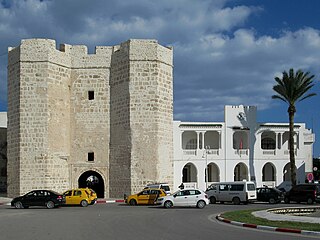
Mahdia is a Tunisian coastal city with 62,189 inhabitants, south of Monastir and southeast of Sousse.
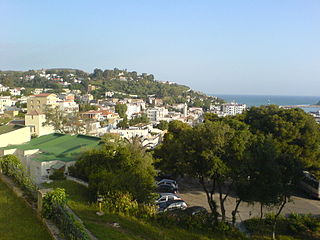
Tabarka is a coastal town located in north-western Tunisia, close to the border with Algeria. Tabarka was occupied at various times by Berbers, Punics, Greeks, Romans, Arabs, Genoese and Ottomans. The town is dominated by an offshore rock on which there remains a Genoese castle. Nationalist leader Habib Bourguiba, later president of post-independence Tunisia, was exiled on Tabarka by the French colonial authorities in 1952. Tourist attractions include coral fishing, the Coralis Festival of underwater photography, and its annual jazz festival.
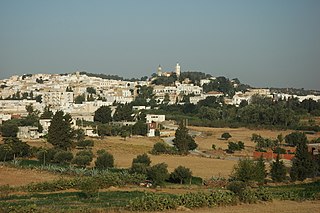
Zaghouan is a town in the northern half of Tunisia.

Sfax is a city in Tunisia, located 270 km (170 mi) southeast of Tunis. The city, founded in AD 849 on the ruins of Berber Taparura, is the capital of the Sfax Governorate, and a Mediterranean port. Sfax has a population of 330,440. The main industries are phosphate, olive and nut processing, fishing and international trade. The city is the second-most populous in the country after the capital, Tunis.
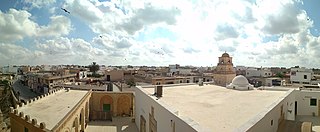
El Djem or El Jem is a town in Mahdia Governorate, Tunisia. Its population was 21,576 during the 2014 census. It is home to Roman remains including the "Amphitheater of El Jem".
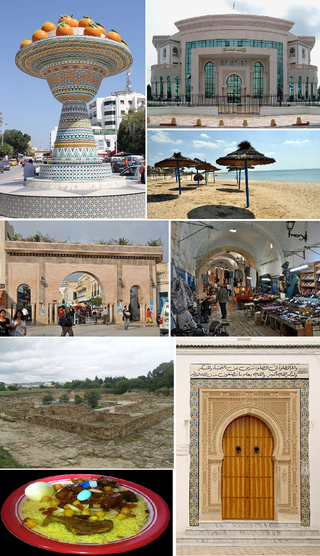
Nabeul is a coastal town located in northeastern Tunisia, on the south coast of the Cape Bon peninsula and surrounded by the Mediterranean Sea on both sides. It is the first seaside resort in Tunisia. It is known for its agricultural riches and its touristic potentials. The city had a population of 73,128 as of the 2014 census.
Kelibia (Kélibia), often referred to as Klibia or Gallipia by European writers, is a coastal town on the Cap Bon peninsula, Nabeul Governorate in the far north-eastern part of Tunisia. Its sand beaches are considered some of the finest in the Mediterranean.
Jebiniana is a town and commune in the Sfax Governorate, Tunisia.

Pupput, also spelled "Putput", "Pudput", "Pulpud" and "Pulpite" in Latin, sometimes located in Souk el-Obiod ou Souk el-Abiod, is a Colonia in the Roman province of Africa which has been equated with an archaeological site in modern Tunisia. It is situated on the coast near the town of Hammamet, between the two wadis of Temad to the north and Moussa to the south. Much of the Pupput is buried under modern holiday developments which have been built over the major part of the site.

Cartennae or Cartenna was an ancient Berber, Carthaginian, and Roman port at present-day Ténès, Algeria. Under the Romans, it was part of the province of Mauretania Caesariensis.

Vallitanus or Vallis was an ancient Roman–Berber colonia in Carthage, Tunisia. The town is identified with ruins at Sidi Medien, where are located the remains of a Roman theatre, and a number of Roman inscriptions bearing witness to the town's name, and some local officials of the time can be found near the theatre.
Rougga is a town in southern Tunisia located in Sfax Governorate, on the Oued er Rougga wadi. Rougga is the Berber name of the town, which is known as Raqqa in Arabic. The town is located on the site of Ancient Roman African city and former bishopric Bararus, which remains a Latin Catholic titular see.
Thenae or Thenai, also written Thaena and Thaenae, was a Carthaginian and Roman town located in or near Thyna, now a suburb of Sfax on the Mediterranean coast of southeastern Tunisia.

Vassinassa was an ancient Roman–Berber city in the province of Byzacena. The exact location of the town is not known for certain, but it was in northern Tunisia.

Henchir-Aïn-Dourat, also known as Ad-Duwayrat or Henchir Durat, is a former Roman–Berber civitas and archaeological site in Tunisia. It is located at 36.767496n, 9.524142e, in the hills just north of Toukabeur and 15.3 km from Majāz al Bāb. It was an ancient Catholic diocese.

Henchir-Sidi-Salah is a rural locality and archaeological site in the hinterland behind Sfax, Tunisia.














